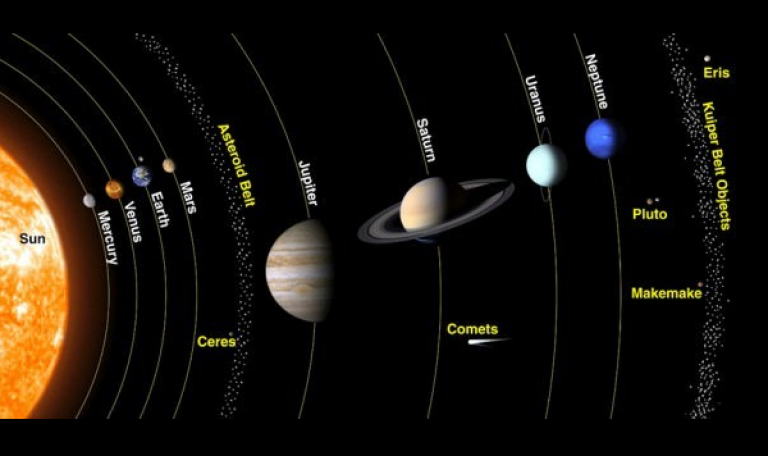What are the temperatures of the different planets?
Thank you for your question!

13 September 2022
Image credit: Universe Today.
At Earth, we have lots of thermometers and satellites that can measure the temperature. On average, Earth’s temperature is 14-16°C, but it can go as high as 56.7°C (highest recorded temperature in Death Valley, USA) and as low as -89.3°C (lowest recorded temperature in Antarctica). The temperature varies so much due to the difference in seasons we experience on Earth. We get seasons because of the elliptical orbit of Earth around the Sun, and Earth’s tilt. We also have an atmosphere which retains the heat we receive from the Sun.
On other planets we don’t have as many instruments and thermometers to measure the temperature, so we estimate what we think the temperature would be. We have to consider lots of factors, including distance from the Sun as well as whether or not the planet has an atmosphere. We have sent spacecrafts to most of the planets to take some measurements, but we don’t fully understand how temperature varies across the whole of these planets.
The first planet from the Sun, Mercury, experiences extreme differences in temperature when it goes from day to night. During the day, the planet is extremely close to the Sun and can reach up to 430°C! However, Mercury doesn’t have an atmosphere, so when it rotates to nightside, this heat gets lost into space as there is no atmosphere to retain the heat. This means the temperature can decrease to up to -180°C.
Next is Venus, which has a really thick atmosphere made up of lots of gases that give it yellow clouds. It has a strong greenhouse effect, similar to the one we experience on Earth. Because of this, Venus is the hottest planet in the solar system. The surface of Venus is approximately 465°C!
Fourth from the Sun, after Earth, is Mars. We have sent lots of satellites and rovers to Mars, so we have a better understanding of the temperature on the surface and how weather changes across a Martian year. You can even look at the temperature right now on Mars! On average, the temperature on Mars is -63°C, but can reach up to 30°C and go as low as -140°C!
Next are the gas giants, Jupiter and Saturn. For these two planets, we don’t know the temperature at the surface as they don’t have a surface (being made of gas). Instead, we estimate the temperature at different pressure levels in the gases. For Jupiter, we think the temperature is roughly -108°C. Saturn is further from the Sun, and so is colder, at roughly -138°C.
Finally, the ice giants, Uranus and Neptune. These planets are the furthest from the Sun, and we know the least about these planets as only one mission has passed these planets (Voyager mission). We can only estimate the temperatures here as we don’t have up-to-date data from Uranus and Neptune, but we think the average temperature of Uranus is -195°C and of Neptune is -201°C.
Roughly, the temperature of the planets decreases as you get further from the Sun. But this is not always the case! Important factors need to be looked at, such as the seasons of the planet, the tilt, and whether it has an atmosphere. To fully understand how temperature varies between each planet, we need to send more spacecrafts to the planets to monitor the temperature.
Take a look at this thermometer diagram of the Solar System Temperatures on the NASA website.
Find out what the weather is like on other planets in our Solar System on the NASA website.
 Close
Close


